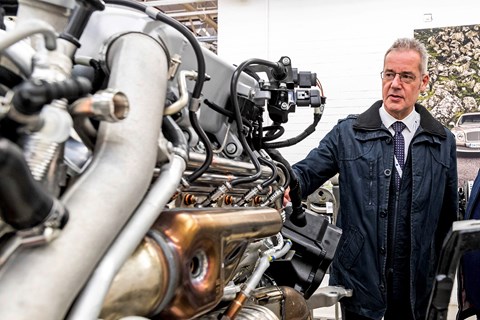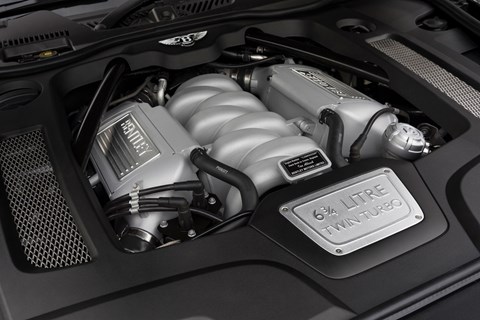► Bentley’s epic L-Series V8 in detail
► The inside story of a 60-year old engine
► From the late ’50s to 2020
Magnificent motor cars like Bentley’s recently retired Mulsanne are redolent of a bygone age. And just as time eventually caught up with the Mulsanne – Bentley’s flagship bows out this year, with 30 Mulsanne 6.75 Edition by Mulliner cars – so it has caught up with the Mulsanne’s remarkable engine, the pushrod V8 that remained in continuous production for more than 60 years. In that time some 36,000 were built.
Originally designed in the early ’50s, the L-series V8 was no heavier (thanks to its all-alloy construction) and barely any bigger than the six it replaced (it had to fit in the same engine bay, that of the ’59 S2) and, at 180bhp, some 50 per cent more powerful. Half a century later, in the Mulsanne Speed, it would be good for 530bhp and an astonishing 811lb ft of torque.
Tim Seipel joined Bentley in 2005, in time to oversee a couple of key phases of the 6.75’s evolution. Here’s what went down.

Fit for purpose
‘The 6.75 was deployed in the big luxury saloons – the Arnage and the Mulsanne – and it suited them brilliantly,’ says Seipel. ‘The more modern engines just weren’t the same. There was a BMW engine in the Arnage when VW bought Bentley, and the very first engineering task issued by Ferdinand Piëch was to have the 6.75 re-installed in the Arnage. The big capacity, across just eight cylinders – most rival engines used 12 – meant you didn’t need to rev it to access its performance.’
Faster, stronger
‘The engine made 400-450bhp on the old Garrett turbos; 450-500bhp and more torque with the MHIs. For 2010, and the Mulsanne, we turned the wick up again using lessons learned on the Brooklands coupe. That was our first foray into the realm of 750lb ft, and we strengthened the engine to cope.’
Just add lightness
‘In that 2010 overhaul, a lot of work went into reducing the weight of the bottom end. It’s a triple win; you reduce the overall weight of the engine, you increase performance and you reduce fuel consumption. We saved 6kg with a new crankshaft, 130g per piston and 100g per conrod.’

Slick coatings
‘The pistons and gudgeon pins were coated with diamond-like carbon [DLC], while the piston skirts were coated with graphite. These coatings helped reduce friction and fuel consumption, and they helped the parts in question deal with very high loads.’
Cam phasing
‘Pushrod architecture made it possible to add cam phasing [variable valve timing] relatively cost effectively, and it’s something we wanted to do for many reasons: improved cylinder fill, low-speed torque, high-speed power, part-load cleanliness and a smooth turbo delivery. We mounted the cam phaser on the front of the block, where the camshaft drive is, and ran an oil feed to it. Adding the technology to an overhead-valve engine would have been a much more involved process.’
Cylinder shutdown
‘For the deactivation [enabling the engine to shut down some cylinders under low load, for increased efficiency] we needed to put electronic switching units on the tappet blocks, and provide two oil feeds; one for lubrication and one to act as a pressure signal to the tappet, telling it to activate or de-activate. We also had to run wires inside the crankcase and seal a connector to the crankcases. Really, it wasn’t a lot of change for a very modern bit of technology – that was the ingenious thing about it. And this was the first engine across the whole VW Group to get cylinder deactivation; thereafter we were seen as the experts. The smaller Bentley V8 is a Porsche engine, of course, but it was Bentley engineers who taught Porsche about cylinder deactivation.’

Promoting swirl
‘The engine was updated again in 2017, with changes to the shape of the ports and the combustion chamber. That work was about cleaner combustion, to meet Euro 6 regulations, and a more stable idle. The differences were pretty detail – they’d be hard to spot to the untrained eye – but they made for a much faster burn. Previously we had rich pockets within the chamber, and we needed a more homogeneous mix to clean the engine up. The changes gave more swirl, and that turbulence gave us a better fuel/air mix. The engine remained two valves per cylinder of course – two very large valves per cylinder…’